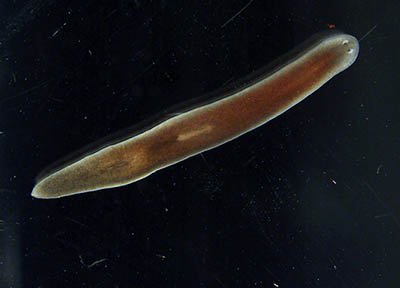
So, what exactly is bioindication? It’s like checking the temperature of a room before entering. By observing certain species, especially flatworms, scientists can gauge how healthy or polluted an environment is. If the flatworms are thriving, chances are the ecosystem is in good shape. If they’re vanishing or struggling, well, that’s a clear warning sign. Let’s dive deeper into how flatworms work as environmental monitors and why this matters.
What Are Flatworms and Why Are They Important?
Flatworms, or Platyhelminthes, are soft-bodied invertebrates that can be found in various environments, from freshwater ponds to the ocean. They come in different shapes and sizes, but all share a flat, ribbon-like body. You might be thinking, “Why should I care about flatworms?” Well, these creatures are important indicators of ecosystem health because of their sensitivity to changes in their environment.
Because they have a simple body structure, flatworms can absorb nutrients and contaminants directly through their skin, allowing them to react quickly to environmental changes. When pollutants are present, flatworm populations often diminish. This makes them excellent bioindicators; their presence, absence, or health can tell scientists a lot about water quality and pollution levels.
How Flatworms Indicate Environmental Changes
You might be wondering, how exactly do flatworms indicate environmental changes? The answer lies in their biology. Flatworms are sensitive to changes in temperature, pH, and the presence of pollutants. For instance, if you suddenly notice fewer flatworms in a pond, it could be a sign of increased pollution or changes in water chemistry.
Let’s take a closer look at how scientists use flatworms for this purpose. Researchers often collect flatworm samples from different habitats and analyze their health. They might look for physical deformities, population density, or even the biochemical makeup of the flatworms. If flatworms show signs of stress or abnormalities, it suggests that the habitat is likely experiencing issues. This way, flatworms act as alarm bells for environmental problems.
Flatworms in Freshwater Monitoring
In freshwater ecosystems, flatworms are particularly valuable for monitoring water quality. Lakes, rivers, and streams often see fluctuations in pollution levels due to agricultural runoff, industrial waste, or urban development. Flatworms help track these changes.
When researchers study flatworm populations in freshwater environments, they look for specific species that thrive in clean water versus those that can tolerate pollution. For instance, certain flatworm species are sensitive to heavy metals, while others may survive in more contaminated waters. By mapping out where different species are found, scientists can create a clearer picture of the overall health of the ecosystem.
Marine Ecosystems and Flatworms
Flatworms don’t just hang out in freshwater; they’re also found in marine ecosystems. Here, they play a similar role as bioindicators. Coastal waters, especially, can be affected by pollutants, overfishing, and habitat loss. Scientists study flatworms in these areas to monitor the impacts of human activities on marine health.
For example, in coral reef systems, flatworms can indicate the health of the reef. Healthy reefs typically support a variety of flatworm species, while stressed reefs may see a decline in flatworm diversity. This relationship emphasizes the interconnectedness of species within an ecosystem.
Challenges in Using Flatworms for Bioindication
While flatworms are great bioindicators, there are some challenges to consider. First off, identifying different flatworm species can be tricky—they often look similar, and accurate identification requires expertise. Additionally, environmental factors can vary widely, affecting flatworm populations in ways that may not be directly linked to pollution.
For instance, natural events like flooding or drought can also influence flatworm numbers. This means researchers need to consider various factors before concluding the health of an ecosystem. Moreover, the complexity of ecosystems can sometimes make it hard to pinpoint why flatworms are declining. It could be pollution, habitat destruction, or something else entirely.
Future of Flatworms in Environmental Monitoring
As we advance in technology and research methods, the role of flatworms in environmental monitoring is expected to grow. New techniques, like genetic analysis, can help scientists better understand flatworm populations and their responses to environmental changes. By using advanced tools, researchers can gain insights into how flatworms adapt or succumb to different conditions.
Moreover, as awareness of environmental issues increases, flatworms could gain more attention in scientific studies and applications. Educational programs might highlight their importance, encouraging a broader understanding of the need to protect our ecosystems.
In conclusion, flatworms are more than just strange little creatures; they play a vital role in monitoring the health of our ecosystems. By acting as bioindicators, they help scientists understand the impacts of pollution and environmental changes. Their presence—or absence—can tell us a lot about the quality of our water and the overall health of our environments.
So, next time you see a flatworm, take a moment to appreciate its importance. These tiny organisms are crucial to our understanding of the natural world, reminding us how interconnected everything is. As we work to protect our ecosystems, flatworms will be there, helping us keep an eye on the health of our planet.
